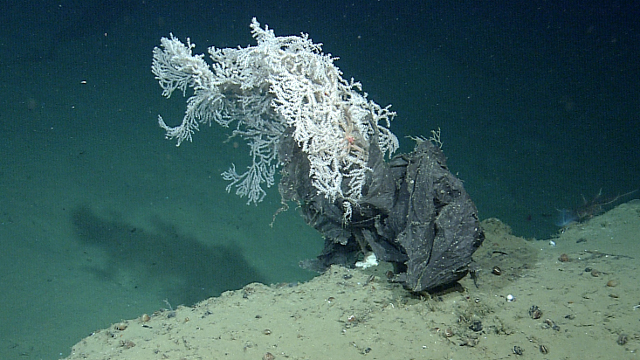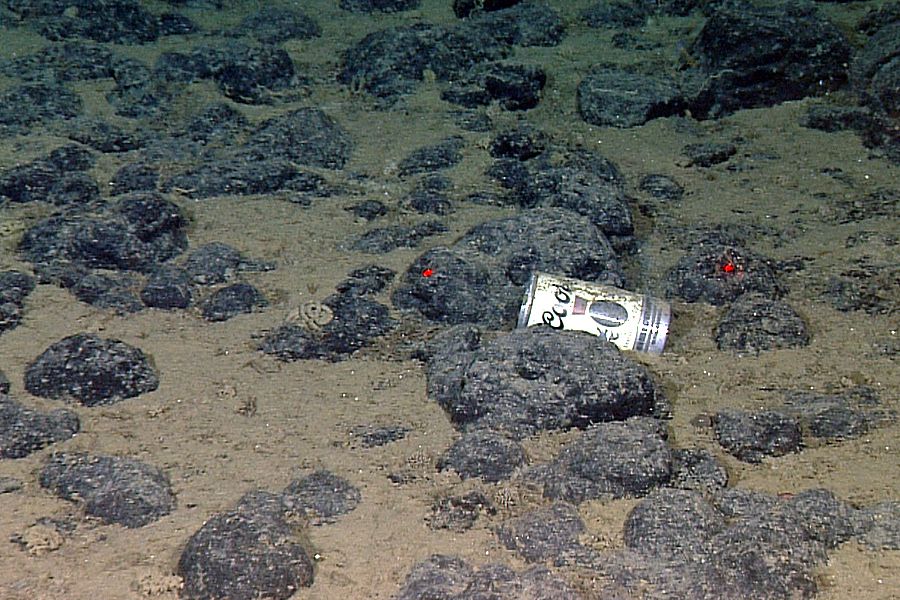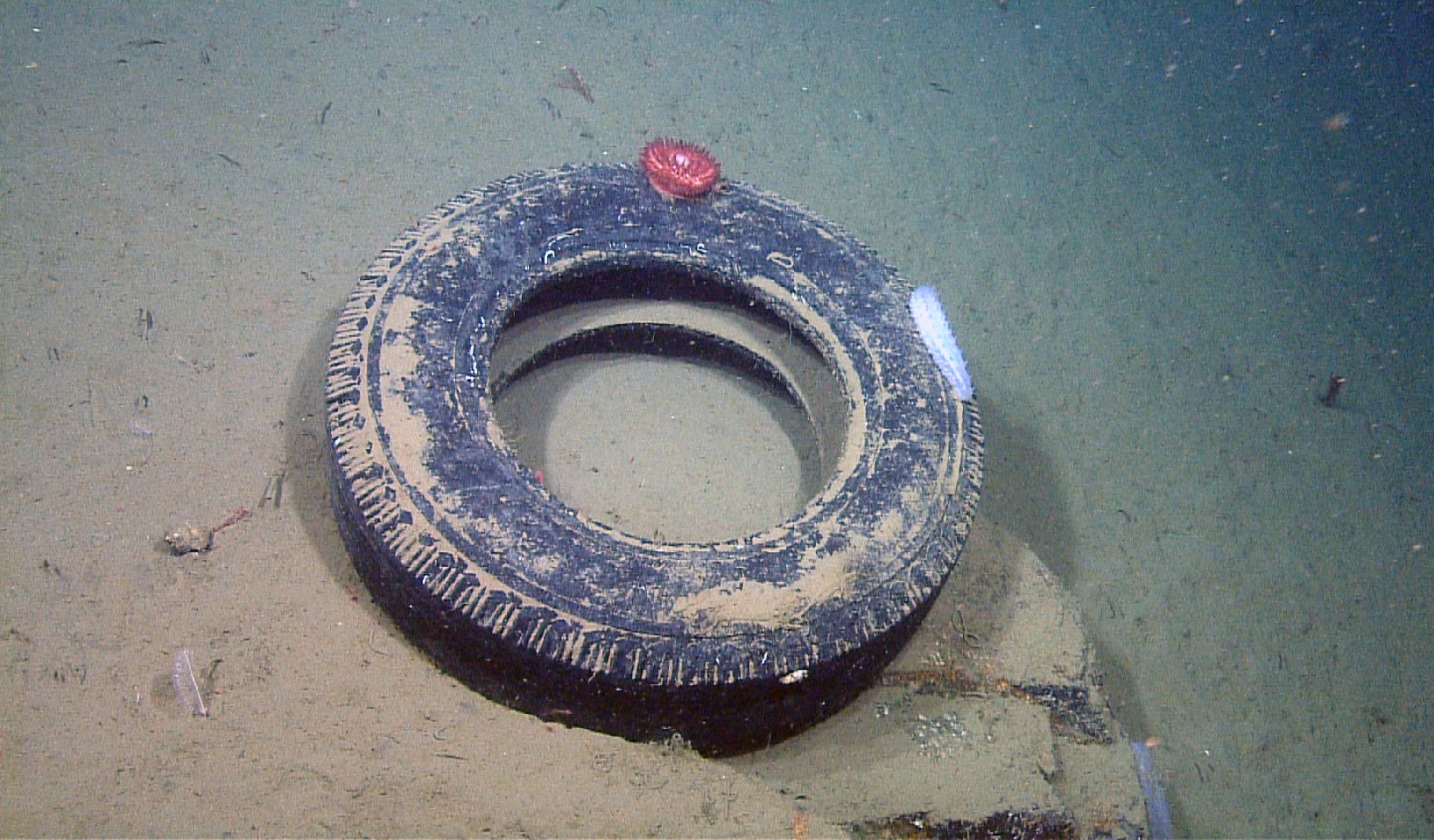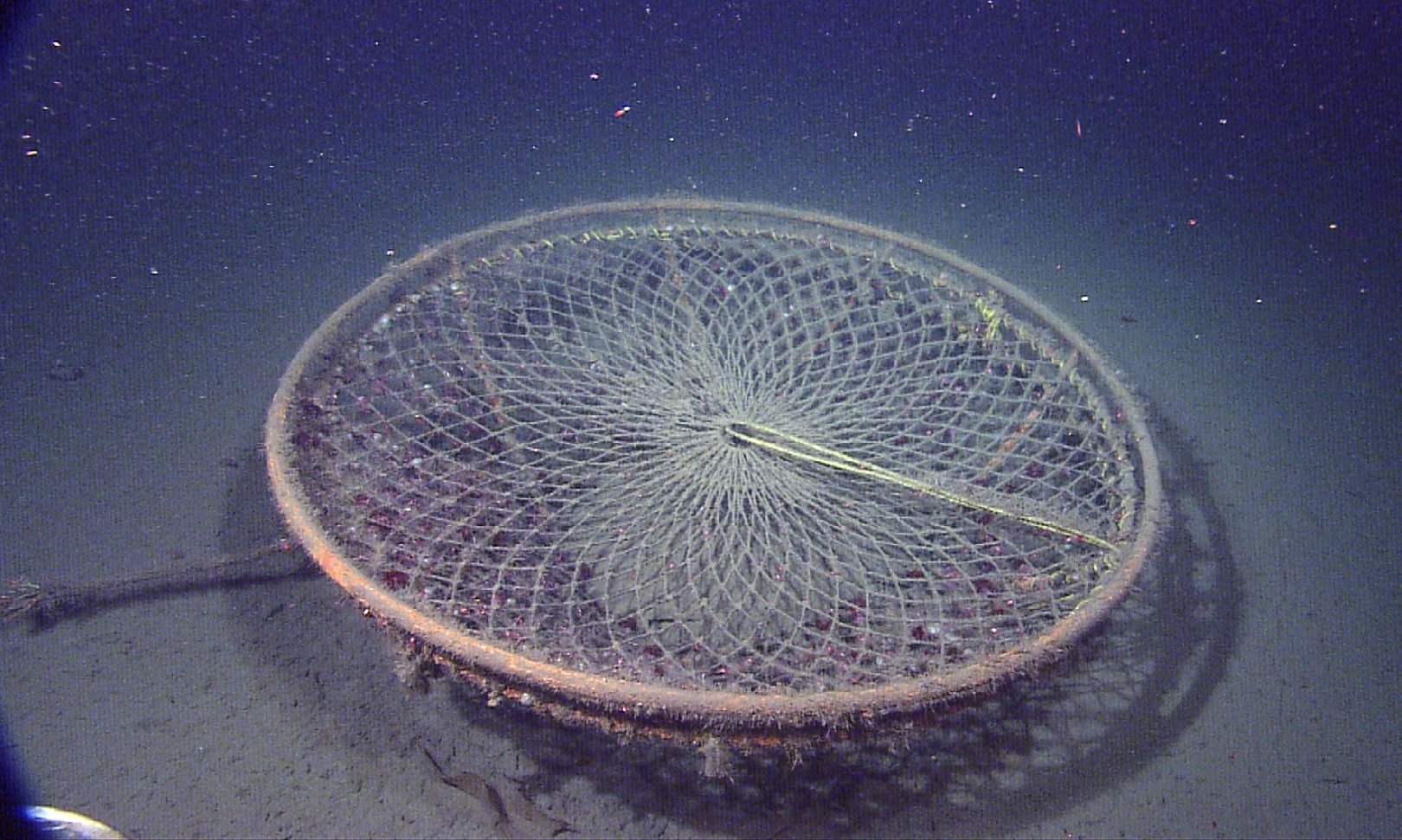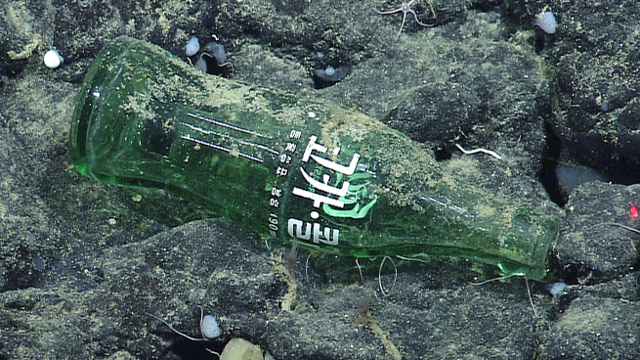
We’ve all heard about the problem of trash in the oceans and seen photos of the Pacific Garbage patch and other plastic “gyres,” which coat hundreds of thousands of square ocean miles with plastic flotsam.
But what happens to the heavy stuff?
New research from the Monterey Bay Aquarium Research Institute shows that trash is also accumulating in the deep sea, as much as two and a half miles beneath the ocean surface. And there’s video to prove it.
MBARI researchers reviewed 18,000 hours of video footage collected by the Institute’s remote operated submarines, or ROVs, over the past 22 years. They found 1,500 observations of garbage, spotted between between Vancouver Island and the Gulf of California, and as far west as Hawaii.
